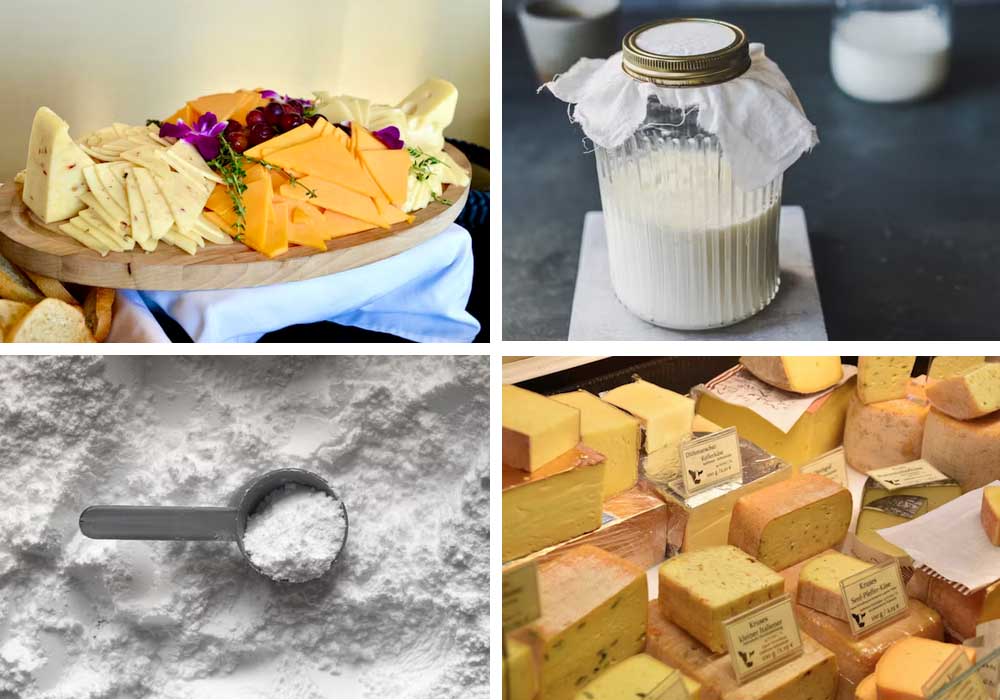Cheese Sorting Machine
Yogurt Cup Sorting Machine
Powdered Milk Sorting Machine
What is Dairy Sorting
Dairy sorting refers to the sophisticated process of separating dairy products, particularly powders and particulates, based on their color and optical characteristics using advanced color sorters. This technology ensures the removal of discolored particles, foreign materials, and quality defects from dairy ingredients. With increasing quality demands in the dairy industry, automated optical sorting has become critical for maintaining product purity and consistency.
Modern dairy sorting solutions handle various dairy products including milk powder, whey protein, casein, cheese powder, and other dairy-based ingredients. These systems help dairy processors meet stringent food safety standards while optimizing production efficiency. Whether detecting burnt particles in milk powder or removing impurities from whey, color sorting technology delivers precision that significantly surpasses manual inspection methods.

How Dairy Sorting Works
Dairy sorting machines employ high-sensitivity CCD cameras and precise optical sensors to analyze dairy particulates as they flow through the system. The technology captures detailed color and spectral information, detecting even minute variations that indicate quality issues. When an unwanted particle is identified, the machine activates a targeted air ejection system to remove it without affecting the surrounding product.
The sorting process begins with dairy product being evenly fed onto a vibratory tray or belt that presents each particle individually to the inspection system. Sophisticated image processing algorithms evaluate multiple quality parameters in real-time, distinguishing between acceptable material and defects with exceptional accuracy. This automated precision ensures consistent product quality while maximizing yield and minimizing waste.
Core Features and Benefits of Dairy Sorting
Modern dairy sorting machines offer unmatched detection capabilities for various dairy product defects including scorched particles, discoloration, and foreign materials. These systems can process thousands of particulates per second while maintaining sorting accuracies above 99%. Customizable sorting parameters allow for adaptation to different dairy products and quality specifications, making these solutions versatile across dairy processing applications.
Beyond quality assurance, dairy sorting enhances food safety by removing potential contaminants that could affect product stability or consumer health. The technology significantly reduces labor requirements while increasing throughput and consistency. The non-invasive optical sorting process preserves the nutritional and functional properties of dairy ingredients throughout the quality control process.
Technical Specifications of Dairy Sorting Machines
High-performance dairy sorters feature ultra-sensitive cameras capable of detecting defects as small as 0.05mm in dairy powders. Processing capacities typically range from 500kg to 5 tons per hour depending on product density and sorting requirements, with minimal product loss during ejection. Advanced models incorporate multiple wavelength detection to identify various defect types simultaneously.
State-of-the-art dairy sorters include intuitive touchscreen interfaces for easy operation and recipe management. Many systems feature dual-lane or multi-sensor configurations for enhanced inspection accuracy. Hygienic design is paramount, with food-grade materials and easy-clean surfaces that meet dairy industry sanitation standards. Energy-efficient designs minimize operational costs while delivering optimal sorting performance.
Applications of Dairy Sorting Technology
Dairy sorting technology is essential for milk powder production, where product color consistency directly impacts market value. It's widely used in whey protein processing to remove impurities and ensure product uniformity. The technology also benefits specialty dairy products like infant formula, where quality standards are exceptionally stringent, and in cheese powder production where visual appearance is critical for end-use applications.
Beyond conventional dairy processing, sorting technology is valuable for plant-based dairy alternatives to maintain product consistency. It's also used in nutritional supplement manufacturing where dairy-derived ingredients require the highest purity levels. The flexibility of modern sorters allows handling of various dairy product forms from fine powders to granular particulates with equal efficiency.
Buying Guide
When selecting a dairy sorter, consider the specific product characteristics and typical defect profiles you encounter. Processing capacity should align with your production volumes, while machine flexibility is important if handling multiple dairy products. Prioritize machines with hygienic designs that meet dairy processing sanitation requirements and feature easy-cleaning access points.
Advanced features like real-time performance monitoring and remote diagnostics offer long-term operational benefits. Consider the manufacturer's expertise in dairy applications and availability of technical support. Many suppliers offer product testing services to demonstrate machine performance with your specific dairy materials before purchase.
Maintenance Guide
Regular maintenance is essential for dairy sorters operating in demanding powder environments. Daily cleaning prevents product buildup that could affect optical performance, while weekly inspections of mechanical components ensure reliable operation. Air system components require particular attention as dairy powders can quickly clog filters and nozzles.
Scheduled professional servicing helps maintain optical calibration and mechanical integrity. Keep detailed records of maintenance activities and machine performance to identify potential issues early. Proper shutdown procedures and thorough cleaning are especially important when switching between different dairy products to prevent cross-contamination.